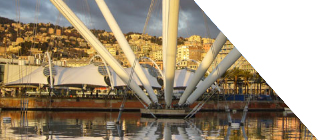Seminario generale Prof. ssa Nadia Pastrone (INFN Torino)
After the discovery of the Higgs boson a new era of precise measurements has been started at LHC. The upcoming update of the European Strategy for Particle Physics will chart the future in the field at the high-energy frontier for the coming decades. The physics potentials and the key differences between the proposed linear or circular collider were evaluated at the various reachable collision energy. Hadron or lepton machines are confronted on their sensitivity to precisely measure the Higgs boson couplings and the possibility to make direct or indirect discoveries. Demanding technologies, bright solutions and vigorous R&D will be needed to launch such challenging projects and pave the future for novel accelerator concepts. The international scenario will be sketched with a personal view to stimulate discussions and suggestions.
Silvia Scorza (SNOLAB, Canada)
Astroparticle physics experiments searching for rare events, such as
neutrinoless double beta decay and dark matter particles interactions,
have to be shielded from background radiation that would interact and
hide the physics of interest, and have to exhibit a radioactive
background as low as possible. Therefore, underground site are
preferred. Being protected from cosmic rays, the underground environment
provides the conditions necessary for experiments dealing with such rare
or exotic interactions.
SNOLAB is one such facility, based at a depth of 2km in the Vale
Creighton mine near Sudbury, Ontario. The lab hosts a number of neutrino
and dark matter experiments as well as new biology and genomic
experiments making use of the unique facility.
Seminario di Fenomenologia
Dr. Stefano Frixione (INFN Genova)
Although the computation of a vast class of $e^+e^-$ cross sections
is fully doable in perturbative QED, the perturbative series is not
well behaved unless a mechanism is devised that allows one to take
into account, to all orders in the coupling constant, the effects
due to multiple emissions of photons and $e^+e^-$ pairs off the
incoming particles. I shall discuss one such mechanism, that has
a strict analogy with its counterpart in QCD and is based upon
the so-called Parton Distribution Functions (PDFs) of the electron
and the positron. I shall present recent results that have improved
the accuracy to which these PDFs are known.
Our friend Carlo M. Becchi has turned 80 on October 20, 2019.
We invite all friends and colleagues to wish Carlo a very happy birthday and at the same time review his seminal contribution to theoretical physics and his role within the national and international community.
A ‘light’ workshop with both purposes will therefore take place at the Physics Department of the University of Genova on Feb. 4th, 2020
https://agenda.infn.it/event/20800/
Seminario di Superconduttività Applicata
Dott. Fedor Gomory (Slovak Academy of Sciences)
Coated conductor (CC) tapes with functional REBCO (RE = Y, Gd, Er,…) layer exhibit unprecedented capability of transporting large amounts of electricity. Critical current, Ic, could reach e.g. 1000 A in a tape 12 mm wide when cooled down to 77 K. However, checking this property along the tape length quite often reveals the existence of locations with Ic value reduced to, say, 900 A. It is not obvious which of these two values should be considered the limitation for a steady long term operation. We expect that a current slightly surpassing the local critical value could be sustained, but at further increase of current the temperature will rise quickly creating the “hot spot” with enormous local dissipation causing an irreparable damage.
Analytical treatment of this electro-thermal problem has been performed. It was found that at surpassing the local Ic, the temperature could stabilize at an elevated value, because the dissipation is balanced by cooling capability of the environment. Then for a given tape architecture and cooling conditions one can find the value of transported current that triggers the development of hot spot. Advantage of this approach is rather simple way to compute the extent to which a tape is able to transport currents larger than the local minimum of critical current. Explicit formulas cover the dependence of hot spot development on the tape architecture and quality of cooling and in this way provide clear indications for an improvement of tape robustness.
Seminario Teorico
Christiana Pantelidou (Trinity Dublin)
seminario fenomenologia: Fabrizio Caola (Oxford)
ANNULLATO
Seminario fisica teorica Andrea Amoretti (U. Genova)
ANNULLATO
Seminario di Fenomenologia Dr.ssa Carmelita Carbone (INAF Milano)
ANNULLATO
Seminario teorico: Alexander Krikun (Nordita Sweden)
